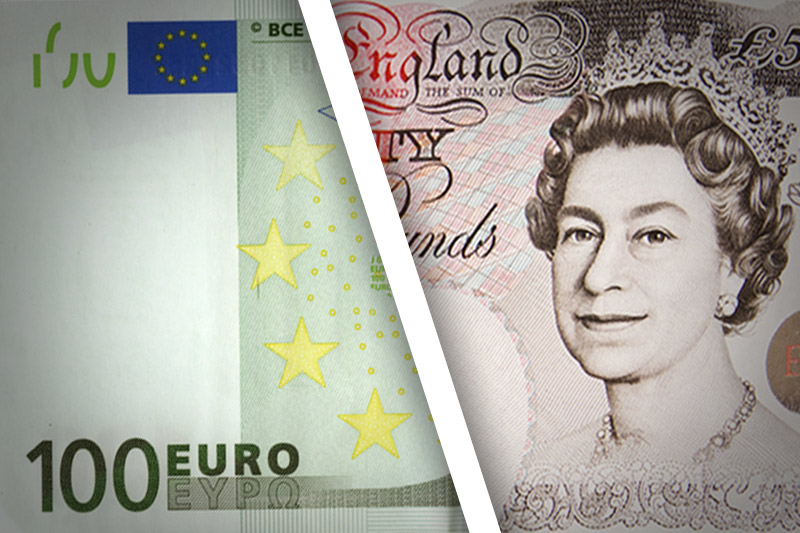Investing.com - The euro dipped lower against the pound on Tuesday, as concerns that Spain will need a full-scale bailout mounted as the country’s borrowing costs continued to climb, while weak data out of the euro zone also weighed.
EUR/GBP hit 0.7804 during European morning trade, the session low; the pair subsequently consolidated at 0.7806, dipping 0.09%.
The pair was likely to find support at 0.7753, Monday’s low and a three-and-a-half year low and resistance at 0.7819, the session high.
Spain auctioned EUR3.02 billion of three and six-month government bonds but at higher yields than in the last auction.
Meanwhile, the yield on Spanish 10-year bonds rose to a euro-era high of 7.57%, well above the 7% threshold widely considered unsustainable if a country is to remain solvent.
Elsewhere, data showed that that manufacturing activity in Germany slowed to the lowest level in more than three years in July, one day after rating’s agency Moody’s cut its outlook on Germany to negative from stable.
Separate reports showed that manufacturing activity in the euro zone contracted at the fastest pace since May 2009 in July, while the French manufacturing sector contracted at the fastest pace in 38 months.
Market sentiment remained somewhat supported after data showed that China’s HSBC purchasing managers index improved to 49.5 in July, its highest level since February, from a final reading of 48.2 in June.
While the index remained below the 50 level which indicates contraction, the improvement from the previous month eased concerns over a slowdown in the world’s second largest economy.
The euro was close to a two-year low against the U.S. dollar, with EUR/USD slipping 0.14% to 1.2100 and was hovering just above a 12-year trough against the yen, with EUR/JPY down 0.40% to 94.61.
Later in the day, the U.S. was also to release preliminary data on manufacturing activity, while Federal Reserve Chairman Ben Bernanke was to speak.
EUR/GBP hit 0.7804 during European morning trade, the session low; the pair subsequently consolidated at 0.7806, dipping 0.09%.
The pair was likely to find support at 0.7753, Monday’s low and a three-and-a-half year low and resistance at 0.7819, the session high.
Spain auctioned EUR3.02 billion of three and six-month government bonds but at higher yields than in the last auction.
Meanwhile, the yield on Spanish 10-year bonds rose to a euro-era high of 7.57%, well above the 7% threshold widely considered unsustainable if a country is to remain solvent.
Elsewhere, data showed that that manufacturing activity in Germany slowed to the lowest level in more than three years in July, one day after rating’s agency Moody’s cut its outlook on Germany to negative from stable.
Separate reports showed that manufacturing activity in the euro zone contracted at the fastest pace since May 2009 in July, while the French manufacturing sector contracted at the fastest pace in 38 months.
Market sentiment remained somewhat supported after data showed that China’s HSBC purchasing managers index improved to 49.5 in July, its highest level since February, from a final reading of 48.2 in June.
While the index remained below the 50 level which indicates contraction, the improvement from the previous month eased concerns over a slowdown in the world’s second largest economy.
The euro was close to a two-year low against the U.S. dollar, with EUR/USD slipping 0.14% to 1.2100 and was hovering just above a 12-year trough against the yen, with EUR/JPY down 0.40% to 94.61.
Later in the day, the U.S. was also to release preliminary data on manufacturing activity, while Federal Reserve Chairman Ben Bernanke was to speak.
